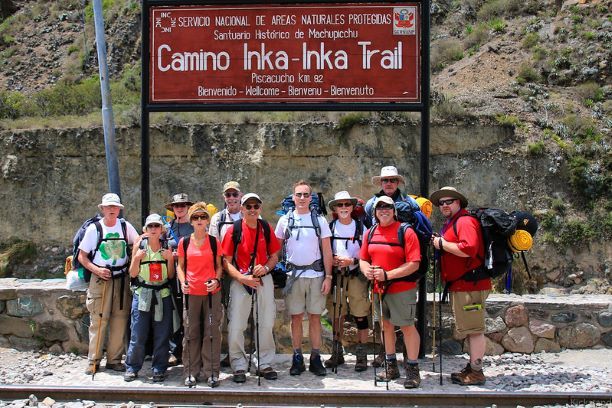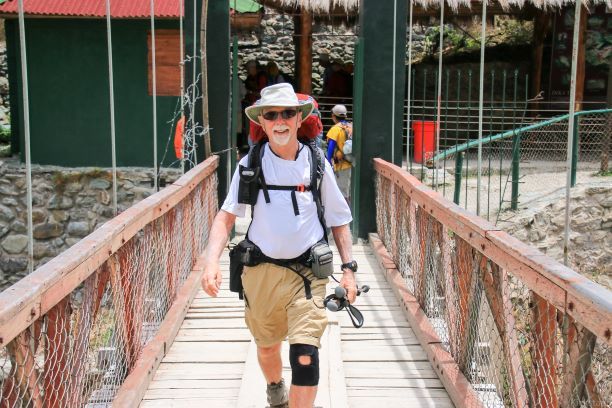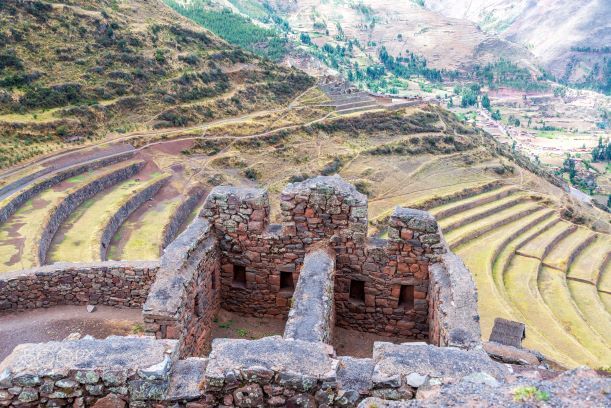Hello bloggers, today we’re going to talk about, the 4-day classic Inca trail to Machu Picchu in Cusco, Peru, South America, which is considered one of the top 5 treks worldwide, and the top 1 in South America.

The Inca trail or classic 4-day Inca path to Machu Picchu, is the way the Incas had to get to Machu Picchu, quickly and safely. Since Machu Picchu was a place of refuge, in case of any major invasion of the Inca empire. As it happened, the Spanish invaded the empire, and never managed to find Machu Picchu.
The story about the inca trail:
The Spaniards only got as far as ollantaytambo, where there is a fortress, and there they were defeated by the rebellious Incas. When the Spanish returned from Cusco with new troops, the Inca resistance was no longer there. For these reasons, the Spanish, thanks to the fortress of Ollantaytambo, could never find their way to Machu Picchu. (El dorado) This is what the Spaniards called Machu Picchu.
And considered the most famous trek in South America, the 4-day Inca Trail is walked by thousands of people every year. Although the total distance is only 38 kilometers, the ancient trail left by the Incas from the Sacred Valley to Machu Picchu winds up and down and around the mountains, winding along three high passes in the Andes, which collectively led to the route being nicknamed the “Inca Trail”.
The views of snow-capped mountain peaks, distant rivers and ranges, and orchid-filled cloud forests are stupendous – and walking from a pre-Columbian ruin near a cliff is something mystical and an unforgettable experience.

When is the best time to do the 4-day Inca Trail?
The best time is from April to October, the driest season, and it gets cold at night.
What is the difference between the 4 days and the 2 days Inca Trail?
The difference are the walking and the archaeological sites that are visited and the level of difficulty of the 2 days Inca Trail.
When should I make the reservation for the 4 days and 3 nights Inca Trail?
You should make your reservation at least 6 months in advance, as the classic Inca trail, because the limit is 500 people per day, and that includes porters, guides, cooks, etc.
If you don’t find vacancies, then you have the option to do the 2-day, and this one you don’t need to book too far in advance.

Can I do the 4-day Inca trail on my own?
No, since it is regulated by the Peruvian government and you need to hire a Peruvian agency that has the permission of the Peruvian government.
1 day: Cusco – Piscaycucho (Km 82) – Wayllabamba:
The trail starts at 82KM, altitude 2,500, at the height of the ruins of Qoriwayrachina, entrance, checkpoint, deliver the entrance tickets.
After the entrance it will be 9 km to walk to the village of Wayllabamba (3000 above sea level), where the groups spend the night camping, at the Qoriwayrachina ruins
2nd day: Wayllabamba – Pacaymayo:
I consider it the most strenuous day, because of the ups and downs, so we will climb to the top of Warmiwañusca mountain, and then descend 700 meters to the Pacaymayu River valley (3500 meters), where groups spend the night camped at Warmiwañusca place.

Day 3: Pacaymayo – Runcuracay – Sayacmarca – Puyupatamarka – Wiñaywayna.
On the third day we will hike 17 km to Wiñaywayna, but this day is less tiring than the previous one and on this very day we will visit 4 very important archeological sites, in Wiñaywayna we will camp.
Archeological site of Runkuraqay:
(Runkuraqay – meaning pile of ruins) is at 3,500m, the building is believed to have been a tambo, a type of post for travelers following the trail to Machupicchu. It had sleeping areas for the travelers and stable facilities for their domesticated animals,
Sayacmarka archeological site:

It is at 3580m was explored by Bingham’s second expedition in 1915, and in 1941 an expedition led by Paul Fejos explored the site again and renamed it Sayaqmarka, because of its geographical location that visually dominates the entire valley of the Urubamba River. Within the citadel are several buildings, mountain form, including a stone aqueduct that once carried water to the site. The walls are solid and the shape of the fortress can easily be seen from afar.
Puyupatamarka archeological site:

It is at 3685m and its name means in Quechua (place over the clouds), and was also discovered by Bingham in 1915, but like the other, it was Paul Fejos who in 1941 renamed it Puyupatamarka, because this place is almost always foggy and the clouds that form in the surrounding valleys. Notable in this set is a platform of almost oval shape and a series of rectangular structures lined up along one side with channels through which water still flows from the highest level. For some archaeologists believe that these structures were baths with some ritual function.
Archeological site of Wynaywayña:
It is at 2645m was revealed by Paul Fejos in 1941 and then in 1942, Peruvian archaeologist Julio C. Tello renamed the place Wiñaywayna (young forever) which is also the Quechua name of a species of orchid, very common from the area, region. There are several well worked constructions, among which stands out one in the upper part known as “tower” built partially with worked stones; a succession of 11 ritual fountains on the right side and also the agricultural sector with a large amount of artificial terraces. Other constructions on the edge of the cliff, with pirka style walls, from ai, you have a wonderful view of the lower part of the mountains, and in the direction to the northwest, you reach the (Intipata-place of the sun) which are artificial terraces for Agricultural use.
Day 4: Wiñaywayna – Intipunku – MachuPicchu:

Wiñaywayna a path, trail that is masterfully carved into the mountain, and on the side is a deep cliff, following the wide trail into the very cool forest.
Arriving where you have some steps that lead you to Intipunku (sun door) is made of steps, was a control gate for people, is was dedicated to the worship of Inti , the sun god, and from there you have the incredible , view of the citadel of Machupicchu, Montaña, Huayna Picchu.
Contact:
We offer tours in the cities of Peru: Cusco, MachuPicchu, Arequipa, Puno, Lima, Trujillo and Chiclayo, Puerto Maldonado, Ica Paracas Nasca, Iquitos and Bolivia.
For more information, please contact us DREAMY TOURS, we will be happy to answer all your questions about tours.










